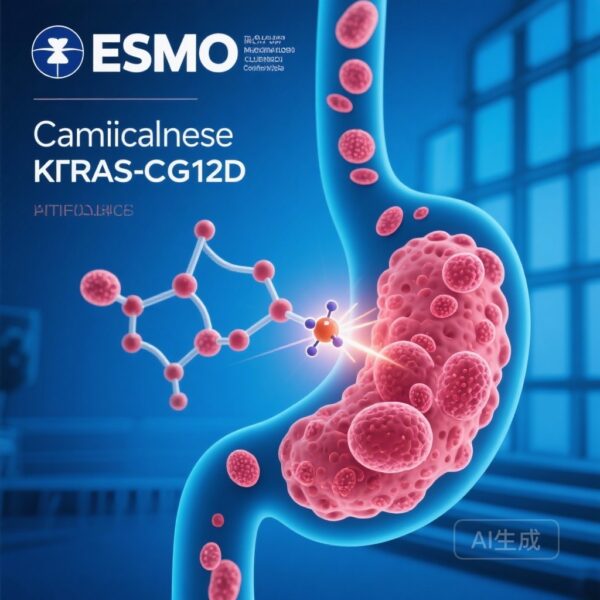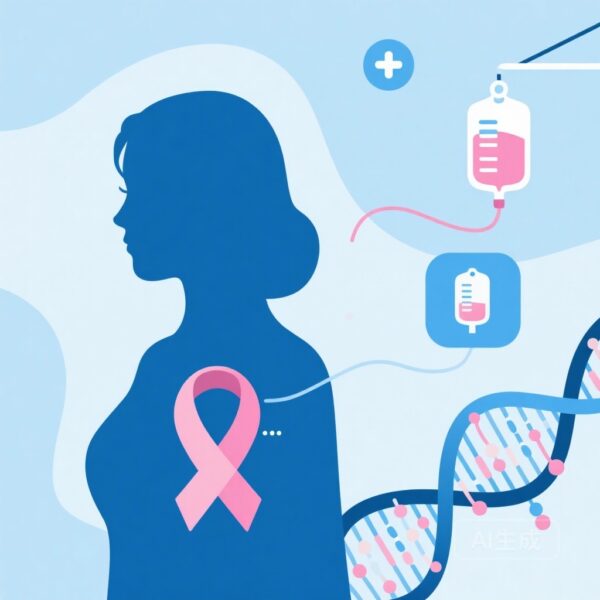Highlights
– In a Netherlands population-based cohort (n = 71,973), the overall adolescent and young adult (AYA) solid tumour survivor population attained 5‑year conditional relative survival (CRS) >95% by four years after diagnosis.
– Several tumour types (germ cell/trophoblastic tumours, malignant melanoma, thyroid and skin carcinomas, neuroendocrine tumours) showed CRS >95% from diagnosis, indicating minimal excess mortality early on.
– Most other AYA solid tumours reached the 95% threshold within five to ten years, suggesting the potential to shorten insurance disclosure windows in Right to Be Forgotten (RTBF) policies for many AYAs but highlighting the need for tumour- and age-specific nuance.
Background
As survival after cancer improves, the social and economic reintegration of survivors — including access to insurance, loans and employment — has moved to the forefront of survivorship policy. Many survivors must disclose their cancer history to insurers for long periods after diagnosis. ‘Right to be forgotten’ (RTBF) laws, enacted in several European countries, limit the period during which a cancer history must be disclosed to insurers, with the Netherlands permitting a disclosure-free period of up to ten years for certain cancers. Whether such blanket timeframes fairly reflect the changing mortality risk across age groups and tumour types is unclear.
Adolescents and young adults (AYAs; commonly defined as ages ~15–39 years) present a distinct oncologic population: their tumour spectrum, treatment exposures and long-term life-course implications differ from both paediatric and older adult patients. Reliable, contemporary estimates of conditional survival — the probability of surviving an additional fixed period (here, five years) given survival to a specified time after diagnosis — allow policy-makers and clinicians to quantify when excess mortality becomes negligible and to consider when cancer history may no longer confer actuarial discrimination for insurers.
Study design
The referenced population-based cohort used the Netherlands Cancer Registry (NCR) to capture all invasive solid malignancies diagnosed in AYAs between 1998 and 2021 (n = 71,973). The investigators calculated five-year conditional relative survival (CRS) annually up to ten years post-diagnosis. Relative survival compares observed survival in the cancer cohort to expected survival in the general population matched by age, sex and calendar year, thereby estimating excess mortality attributable to cancer and its consequences. A hybrid analysis approach was used to provide up-to-date survival estimates across diagnosis years. Analyses were presented for the entire AYA solid tumour cohort and stratified by sex, age group and tumour type.
Key findings
The principal findings were:
- The overall AYA solid tumour survivor cohort reached the minimal-excess-mortality threshold (five-year CRS >95%) at four years post-diagnosis.
- Specific tumour groups demonstrated minimal excess mortality from diagnosis onward — these included germ cell and trophoblastic tumours (testicular and ovarian germ cell tumours and trophoblastic disease), malignant melanoma, thyroid carcinoma, non-melanoma skin carcinoma and neuroendocrine tumours (NETs).
- Most remaining solid tumour types achieved the 95% CRS threshold within five to ten years after diagnosis.
- Findings were generally consistent across sex and age strata within the AYA range, though some variation by tumour type necessitates tailored interpretation.
Interpretation of these results centers on the time at which excess mortality attributable to cancer becomes negligible. A five-year CRS >95% is a practical operational threshold indicating that survivors’ mortality risk approximates that of the general population, though it does not capture non-fatal late effects, quality of life deficits, or socioeconomic sequelae.
Illustrative implications by tumour type
– Germ cell tumours: Testicular germ cell tumours in young men have excellent cure rates, often with early normalization of excess mortality; the data confirm minimal long-term excess mortality for many patients.
– Malignant melanoma and thyroid carcinoma: Many early-stage lesions treated effectively result in survival similar to peers within a short timeframe.
– NETs and skin carcinomas: Indolent biology in many cases leads to early attainment of near‑normal survival probabilities.
– Other tumours: Some AYA solid tumours (for example, certain sarcomas or advanced-stage cancers) can have protracted morbidity or late relapses; these typically required longer to reach CRS >95%.
Expert commentary
Strengths of the study include comprehensive population coverage, a large sample size across two decades and use of relative survival to estimate cancer-attributable excess mortality. The hybrid analysis provides up-to-date conditional survival estimates that are more relevant to current patients than cohort-only methods restricted to older calendar periods.
Limitations and caveats:
- The study focused exclusively on solid malignancies; hematologic malignancies (leukemias, lymphomas) were not included, and they have distinct relapse patterns and late-effect profiles.
- Relative survival estimates measure excess mortality but do not reflect non-fatal late effects (cardiotoxicity, secondary malignancies, infertility, neurocognitive impairment) that can be highly relevant for insurers and for survivors’ life quality and employability.
- Achieving CRS >95% denotes parity in mortality risk but does not imply restoration of pre-morbid health status across all domains.
- Findings are grounded in the Dutch healthcare and epidemiologic context (including stage at diagnosis, treatment patterns and population life tables); transportability to countries with different healthcare systems, cancer epidemiology or insurance markets should be undertaken cautiously.
From a policy perspective, the results suggest that a one-size-fits-all RTBF duration — especially a long, blanket period such as ten years — may not align with contemporary survival realities for many AYA patients with solid tumours. For large subsets of AYA survivors, excess mortality becomes negligible within four to five years. This raises a cogent argument for stratified RTBF rules that consider age-at-diagnosis and tumour-specific trajectories rather than grouping AYAs with older adults whose cancers and comorbidities often carry different long-term risks.
Clinical and policy implications
Practical implications fall into several domains:
- RTBF law review: Legislative bodies and regulators should consider evidence-based, tumour- and age-specific RTBF timeframes. For many AYA solid tumours, a four- to five-year disclosure-free interval appears evidence-supported for mortality risk equalization, but exemptions are needed for tumour entities with later risks.
- Insurer actuarial practice: Insurers could incorporate modern conditional survival evidence to refine risk models rather than relying on historical blanket exclusion periods; doing so could reduce unjust financial discrimination against young survivors.
- Clinical counseling: Clinicians and survivorship services should explain to patients both the survival outlook and the limits of CRS (survival vs morbidity). Survivors need information about residual health risks that may affect insurance beyond mortality (e.g., pre-existing condition exclusions, disability coverage).
- Stakeholder engagement: Policy change should be accompanied by multi-stakeholder dialogue including survivors, clinicians, insurers, regulators and ethicists to balance actuarial fairness with social protection goals.
Research and implementation priorities
To support evidence-based policy, further work is recommended:
- Extend analyses to hematologic malignancies and to subgroups with distinct biology (e.g., molecular subtypes) to identify additional RTBF-relevant nuances.
- Quantify non-fatal late effects and their influence on actuarial risk for insurance lines beyond life insurance (health, disability, mortgage insurance).
- Conduct comparative analyses across countries to understand how differences in stage at diagnosis, treatment access and survivorship care change CRS timelines.
- Model the economic and social impacts of shortened RTBF windows for AYAs, including potential changes in insurance pricing and survivor financial protection.
Conclusion
This large, contemporary Netherlands population study demonstrates that the majority of AYA survivors with solid malignancies reach five-year conditional relative survival exceeding 95% within four years post-diagnosis, with some tumour types achieving this threshold immediately. These findings provide empirical support for reappraising RTBF disclosure durations for AYAs, moving toward more tailored, tumour- and age-specific approaches that reduce unnecessary financial discrimination while preserving actuarial fairness for insurers. Any policy change should be informed by broader data on late morbidity, cross-jurisdictional analyses and inclusive stakeholder deliberation.
Funding and clinicaltrials.gov
The referenced study reported no specific external funding. This analysis and commentary did not involve any clinical trials.
References
1. Vrancken Peeters NJMC, van der Meer DJ, Wardenier B, L’hôte M, Manten-Horst E, Karim-Kos HE, van der Graaf WTA, Husson O. 5-Year conditional relative survival of adolescents and young adults with solid malignancies in the Netherlands: a population-based cohort study. Lancet Reg Health Eur. 2025 Aug 13;57:101429. doi: 10.1016/j.lanepe.2025.101429. PMID: 41132775; PMCID: PMC12541644.
2. Bleyer A, Barr R, Hayes-Lattin B, Thomas D, Ellis C, Anderson B. The distinctive biology of cancer in adolescents and young adults. Nat Rev Cancer. 2008 Apr;8(4):288–298. doi:10.1038/nrc2349.
Author note
This article interprets and contextualizes findings from a recently published population-based study to inform clinical and policy audiences. It does not modify or extend the original data; readers should consult the primary publication for detailed methods and subgroup results.



